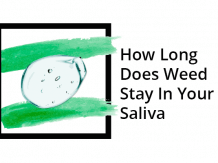A short history of medicinal cannabis
A short history of medicinal cannabis
Cannabis most likely originates from Central Asia, as indicates it was cultivated in China for food and fiber already 10.000 years ago. Also in ancient clues have been found for the use of cannabis as food or medicine. In fact, cannabis is one of the oldest known medicinal plants and is described in almost every ancient handbook on plant medicine, most commonly in the form of a tincture or a tea. Some religions were closely related to the properties of the cannabis plant. For example, in Hindu legend cannabis is believed to be the favorite food of the god Shiva, because of its energizing properties. As cannabis spread from Asia towards the West, almost every culture came into contact with this miracle plant. Nowadays, cannabis can be found in all temperate and tropical zones, except in humid, tropical rainforests.
Use for fiber
As a fiber plant cannabis is more commonly known as hemp. It produces some of the best and most durable fibers of natural origin. For a long time in history, these fibers were used to produce sails for sea-ships, paper, banknotes, and even the first Levi’s jeans. Despite the fact that cannabis was grown on a large scale in most countries, the abuse as a narcotic remained uncommon in Europe or the United States until relatively recently. People were largely unaware of the narcotic properties of cannabis and it is unlikely that early cultivars, selected mainly for their fiber qualities, contained significant amounts of the psychoactive compound THC.

Medicinal use in Europe
The medicinal use of cannabis was only introduced in Europe around 1840, by a young Irish doctor, William O’Shaughnessy. He served for the East India Trading Company in India, where the medicinal use of cannabis was widespread. Unlike European fiber cannabis, these Indian varieties did contain a reasonable amount of bioactive compounds. In the following decades, cannabis knew a short period of popularity both in Europe and the United States. At the top of its popularity, over 30 different medicinal preparations were available with cannabis as active ingredient Such medicines were recommended for indications as various as menstrual cramps, asthma, cough, insomnia, support of birth labor, migraine, throat infection and withdrawal from opium use.
Difficulties with the supply from overseas (tropical regions) and varying quality of the plant material made it difficult to prepare a reliable formulation of cannabis. Because no tools existed for quality control it was impossible to prepare a standardized medicine, so patients often received a dose that was either too low, having no effect, or too high, resulting in serious side effects. Moreover, cannabis extract was not water-soluble and could not be injected, while oral administration was found to be unreliable because of its slow and erratic absorption. Because of such drawbacks, the medicinal use of cannabis increasingly disappeared at the beginning of the twentieth century. When finally a high tax was imposed on all cannabis-based products (seeds and fibers excluded) and increasingly restrictive legislation was introduced for cannabis abuse, the medicinal use of cannabis rapidly disappeared from Western medicine in the period after 1937.
Use as a recreational drug
Only since the flower-power-time of the 1960s, the smoking of cannabis as a recreational drug has become a widely known phenomenon in the Western world. From then on, import of stronger varieties from the tropics, combined with a growing interest in breeding, initially most notably among American Vietnam war veterans, led to a steady increase in psychoactive potency. Contemporary recreational cannabis has increasingly become a high-tech crop, grown indoors under completely artificial conditions.
Starting from 1954, the World Health Organization (WHO) began to claim that cannabis and its preparations no longer served any useful medical purpose and are therefore essentially obsolete. Up to that moment, cannabis legislation had been based on a large number of conventions, causing considerable confusion in the execution of treaties.
Under the pressure of increasing reports that cannabis was a drug dangerous to society, it was proposed to combine all in a single convention, the draft of which was finally accepted by the United Nations in 1961. In the following years, several complementary treaties were made to strengthen it. Under the “Single Convention on Narcotic Drugs” cannabis and its products were defined as dangerous narcotics with a high potential for abuse and no accepted medicinal value. It reflected the belief that cannabis was a dangerous narcotic with a threat that was equal to the most dangerous opiates, as it was strongly believed that cannabis use could serve as a stepping stone to the use of such drugs.
And now?….
Since the Single Convention, the potential danger of cannabis abuse by recreational users has been much higher on the political agenda than any of its benefits as a source for fiber, food, or medicines. However, times seem to be changing as more and more countries around the world seriously start to reconsider cannabis medicine.





Leave a Reply